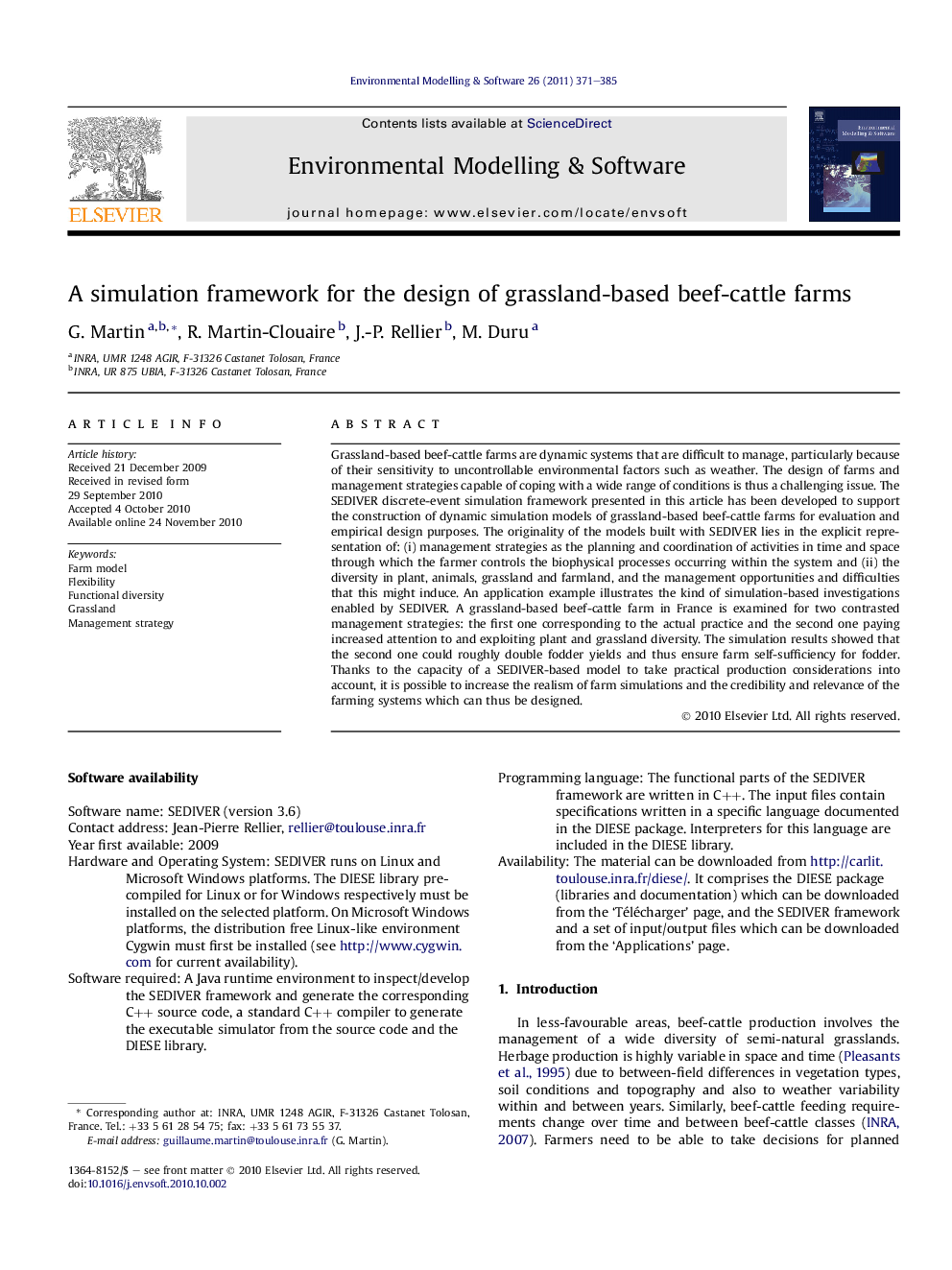| Article ID | Journal | Published Year | Pages | File Type |
|---|---|---|---|---|
| 10370808 | Environmental Modelling & Software | 2011 | 15 Pages |
Abstract
Grassland-based beef-cattle farms are dynamic systems that are difficult to manage, particularly because of their sensitivity to uncontrollable environmental factors such as weather. The design of farms and management strategies capable of coping with a wide range of conditions is thus a challenging issue. The SEDIVER discrete-event simulation framework presented in this article has been developed to support the construction of dynamic simulation models of grassland-based beef-cattle farms for evaluation and empirical design purposes. The originality of the models built with SEDIVER lies in the explicit representation of: (i) management strategies as the planning and coordination of activities in time and space through which the farmer controls the biophysical processes occurring within the system and (ii) the diversity in plant, animals, grassland and farmland, and the management opportunities and difficulties that this might induce. An application example illustrates the kind of simulation-based investigations enabled by SEDIVER. A grassland-based beef-cattle farm in France is examined for two contrasted management strategies: the first one corresponding to the actual practice and the second one paying increased attention to and exploiting plant and grassland diversity. The simulation results showed that the second one could roughly double fodder yields and thus ensure farm self-sufficiency for fodder. Thanks to the capacity of a SEDIVER-based model to take practical production considerations into account, it is possible to increase the realism of farm simulations and the credibility and relevance of the farming systems which can thus be designed.
Related Topics
Physical Sciences and Engineering
Computer Science
Software
Authors
G. Martin, R. Martin-Clouaire, J.-P. Rellier, M. Duru,
